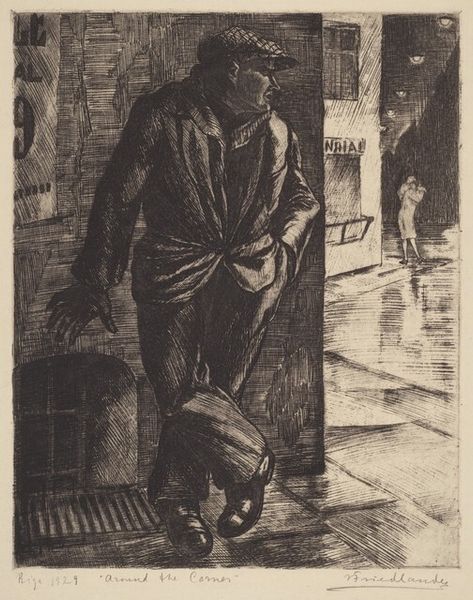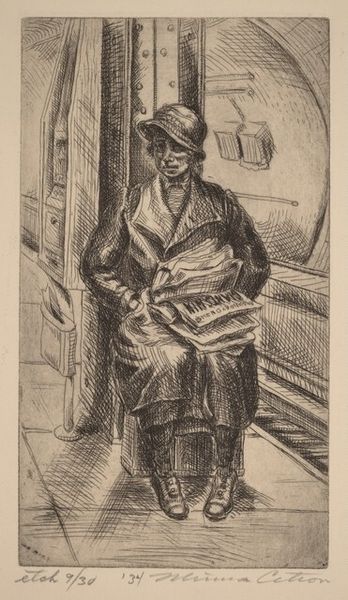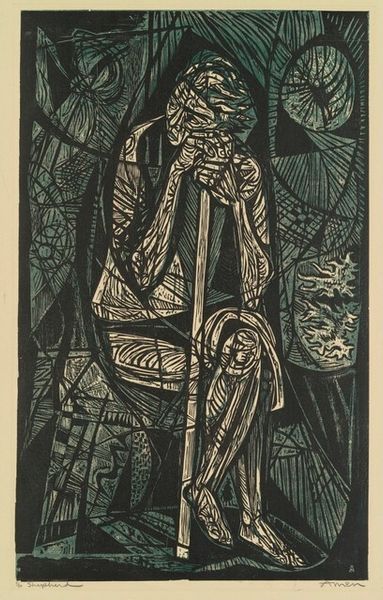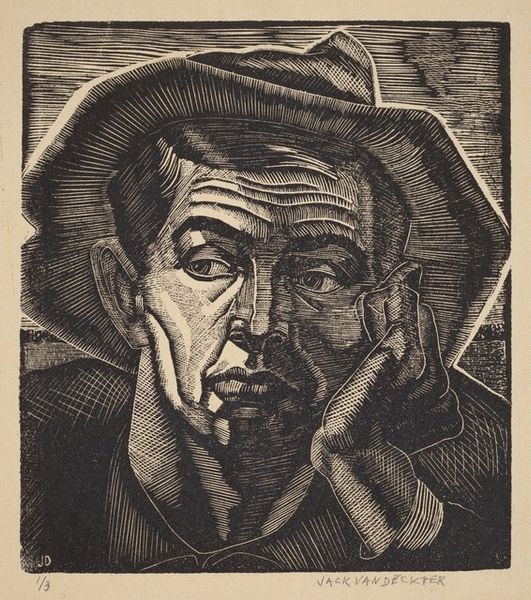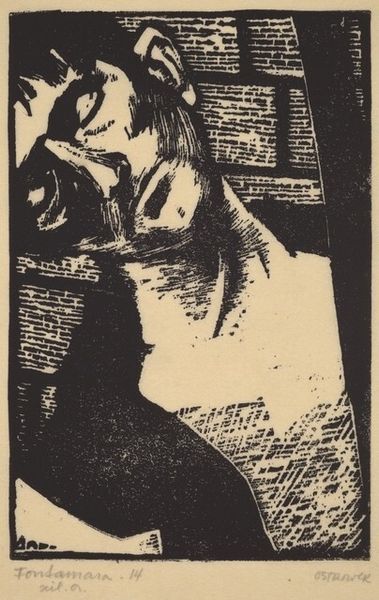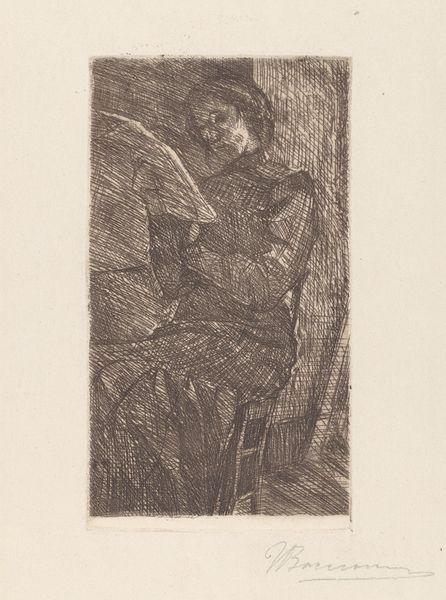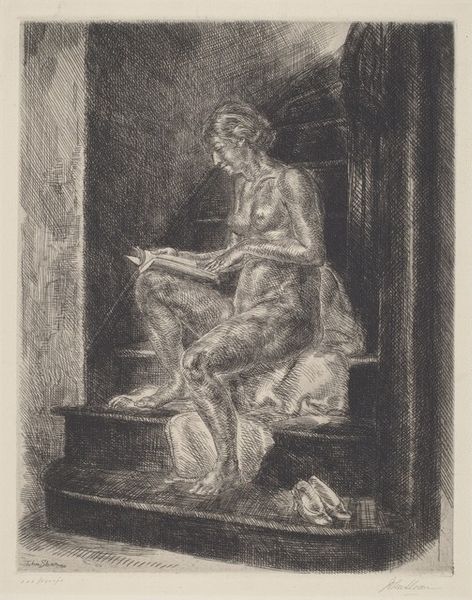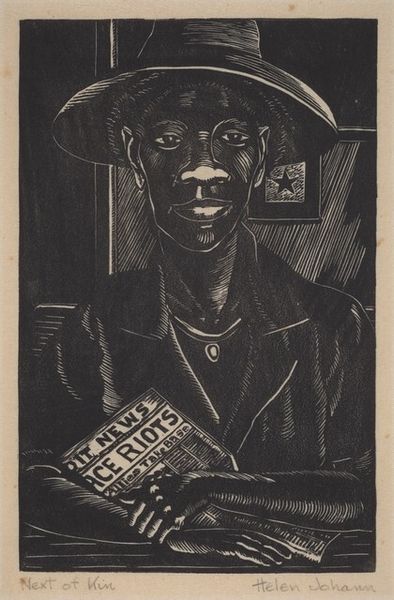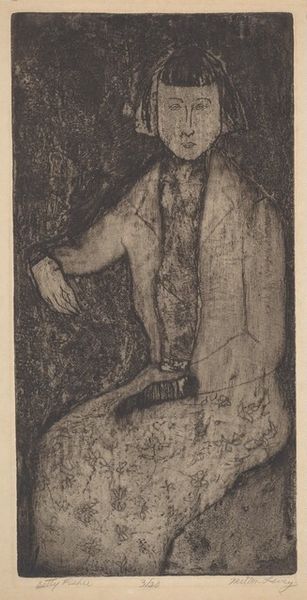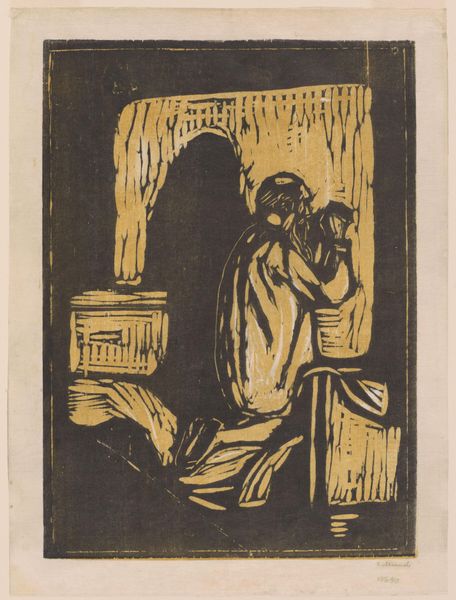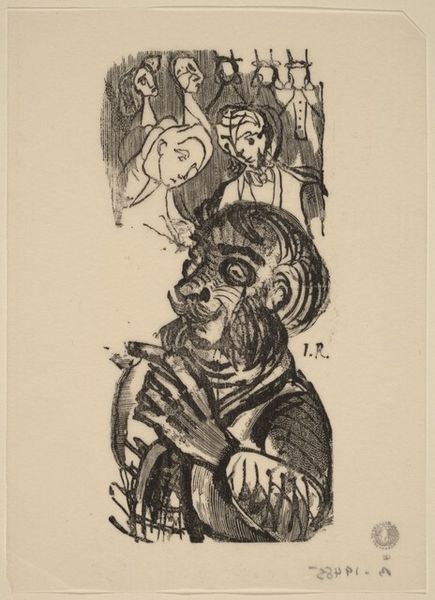
Copyright: National Gallery of Art: CC0 1.0
Editor: This woodcut, "Untitled (Blind Man)," was created by Gregory Orloff around 1938. I'm immediately struck by its high contrast and almost unsettling directness. What can you tell me about it? Curator: What’s interesting is the process itself. Woodcut requires intense labor – carving away at the block, understanding the limitations and possibilities of the material. Look closely. Where do you see the marks of the artist’s hand? Editor: I see it most in the cross-hatching used to create shadows and texture, especially on his shirt. It feels almost rough, not refined. Curator: Exactly. Consider that alongside the subject matter: a man who seems both burdened and resolute amidst what looks like industrial machinery. This print, made using such a direct, physically demanding technique, then becomes an interesting social commentary, doesn’t it? Is he working-class? Does his blindness represent something larger about the industrial complex? Editor: That makes sense! The process becomes a kind of metaphor for the labor and struggle of the working class during that time. What's in the box the blind man is holding? Is that another product made by laborers? Curator: An astute observation! What is he selling and to whom? Was he perhaps blinded on the job, left jobless, thus made to hawk small items on the street? These are some of the economic and production related aspects for us to ponder. Editor: I never thought about the choice of material having such a direct connection to the artwork's message. Curator: Seeing art through its materials and labor practices helps to reveal these kinds of often overlooked meanings.
Comments
No comments
Be the first to comment and join the conversation on the ultimate creative platform.
